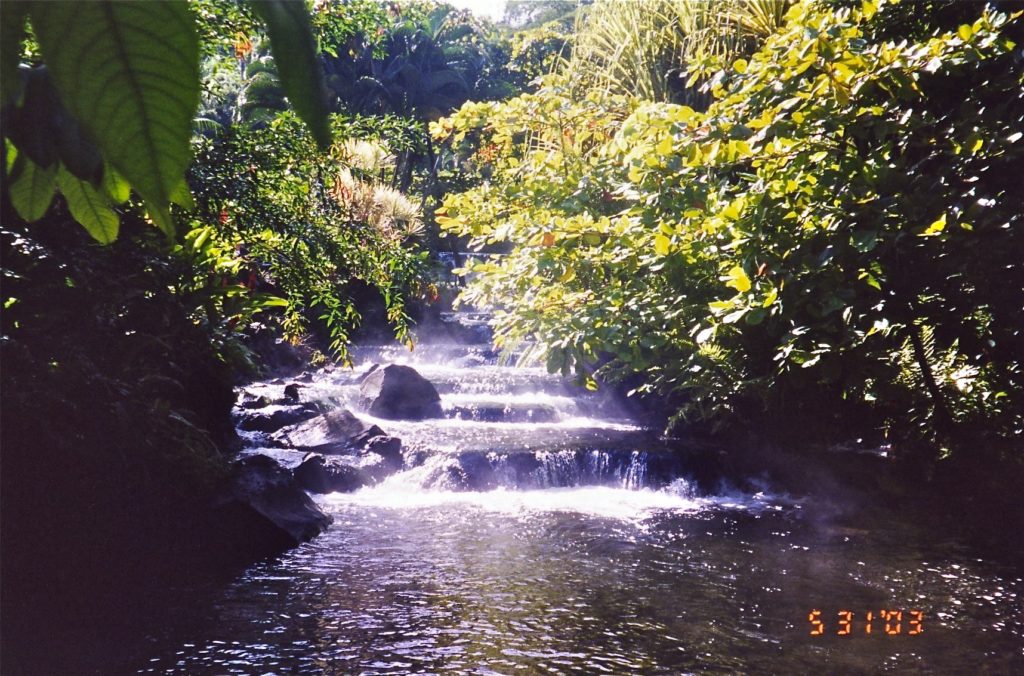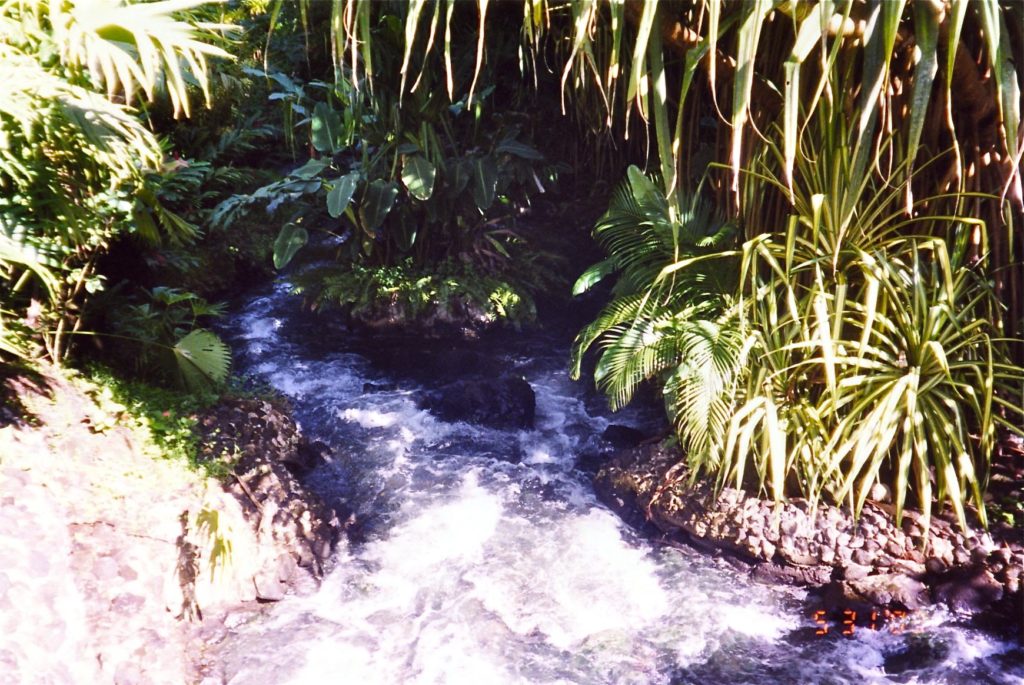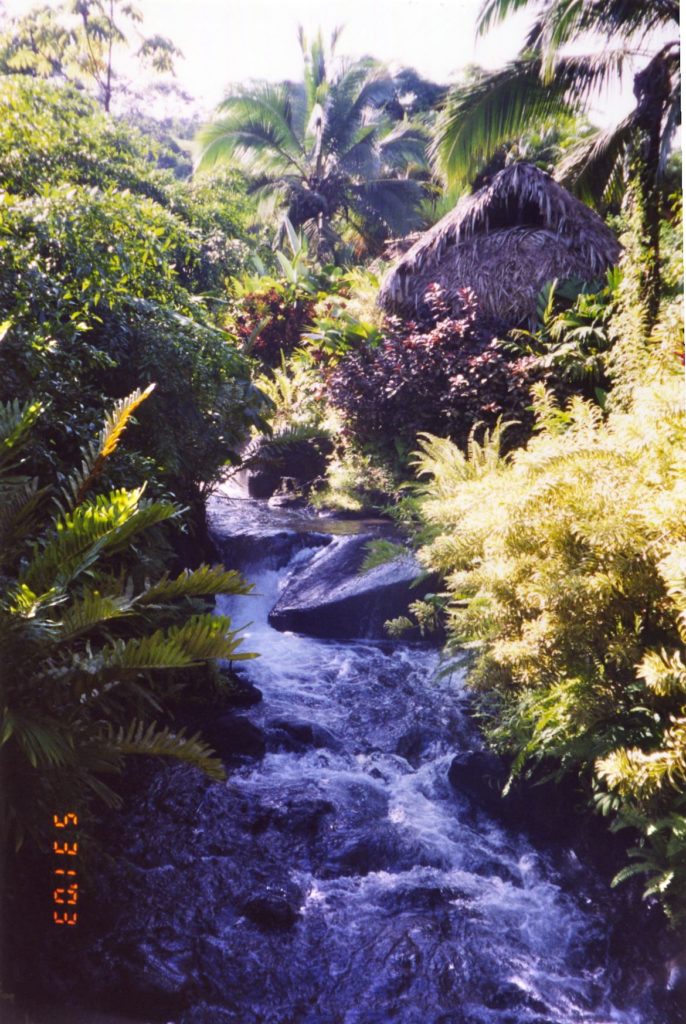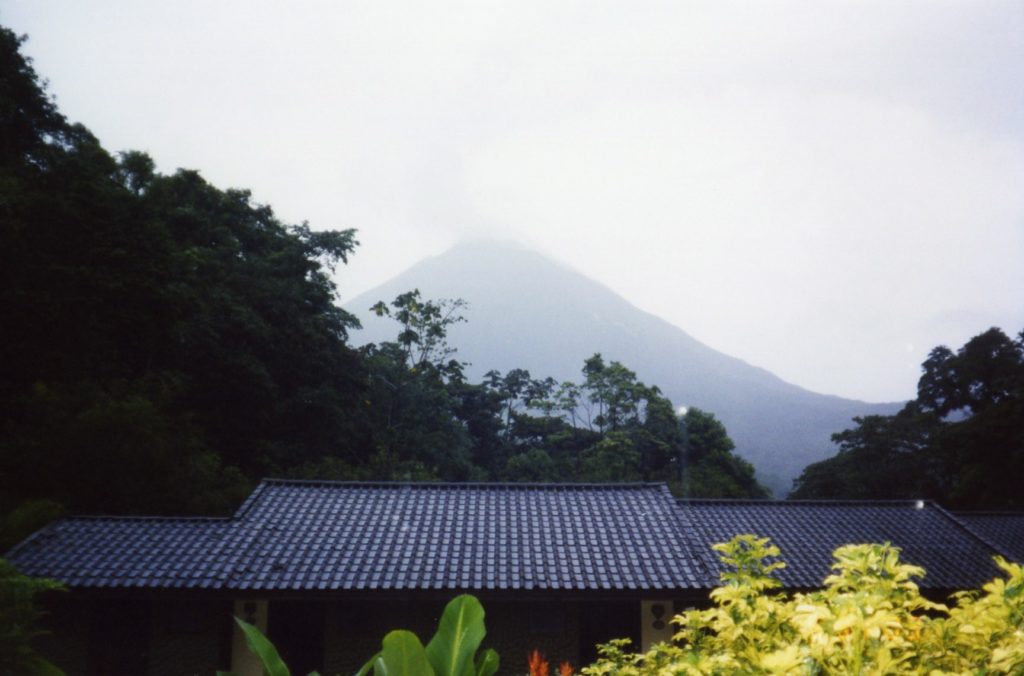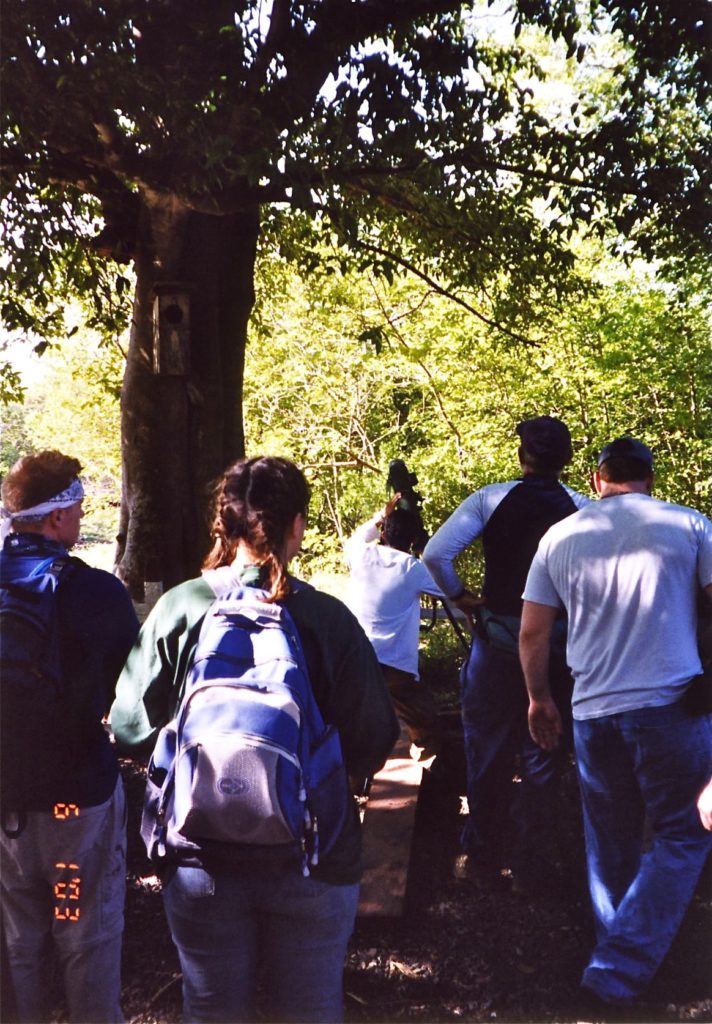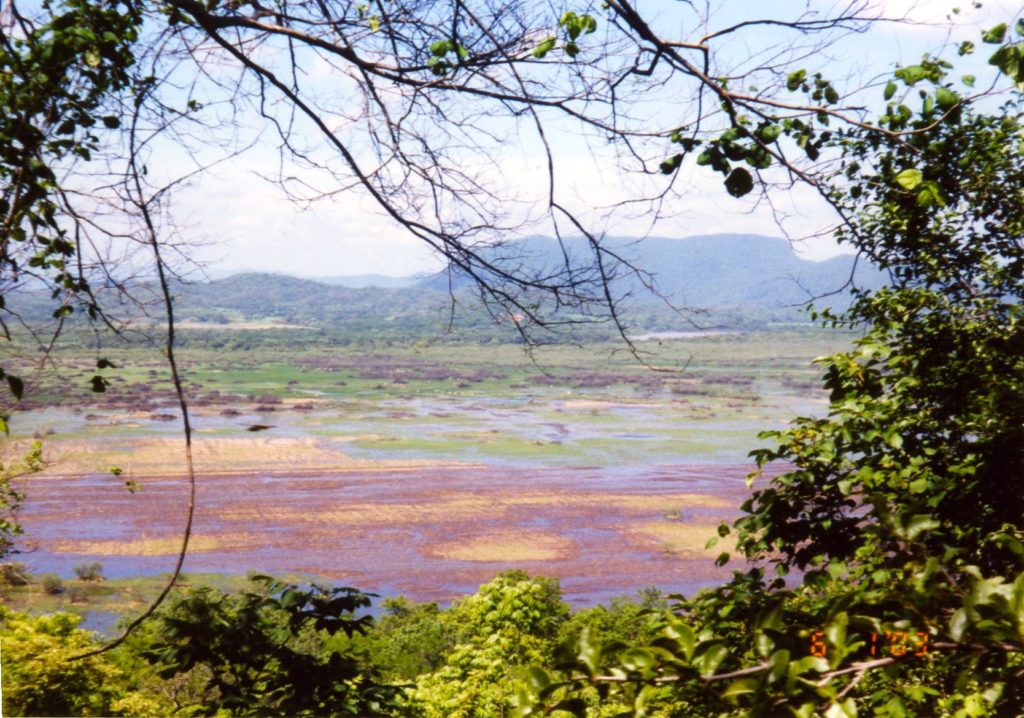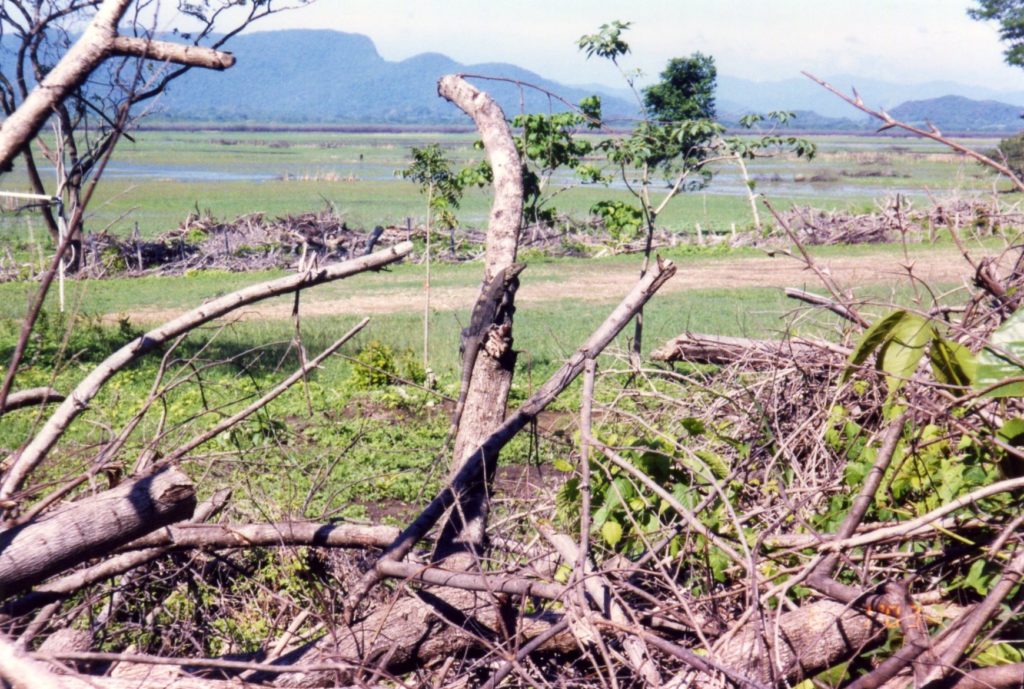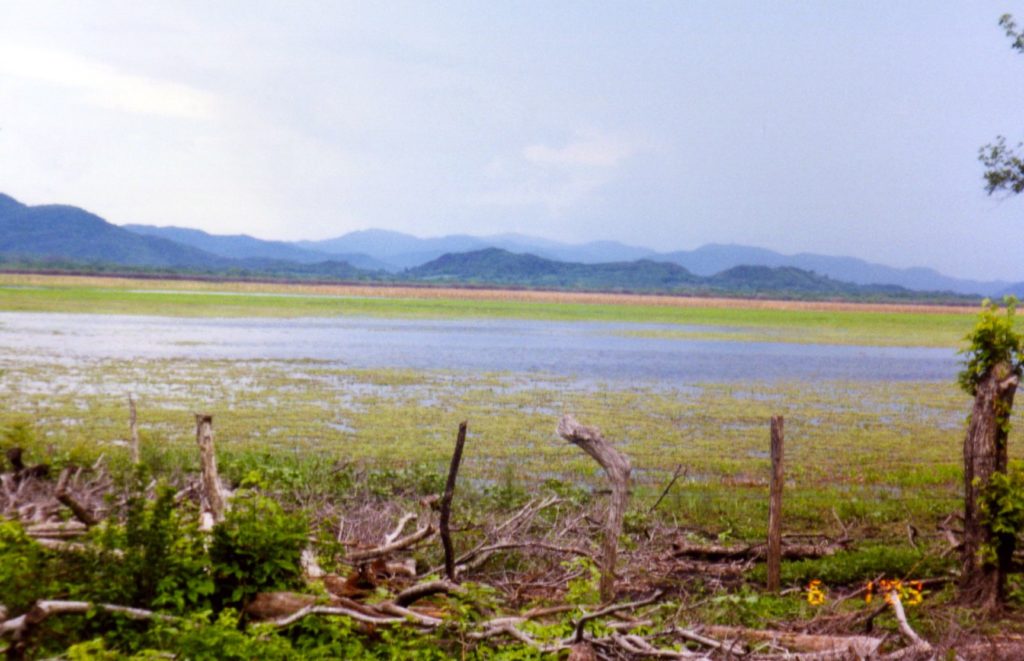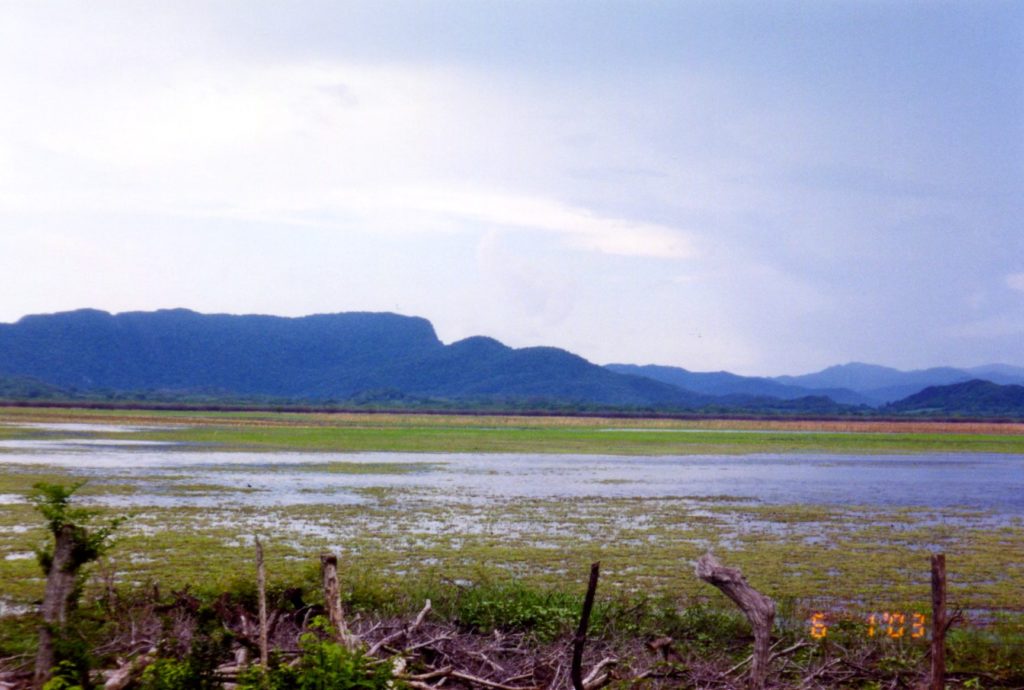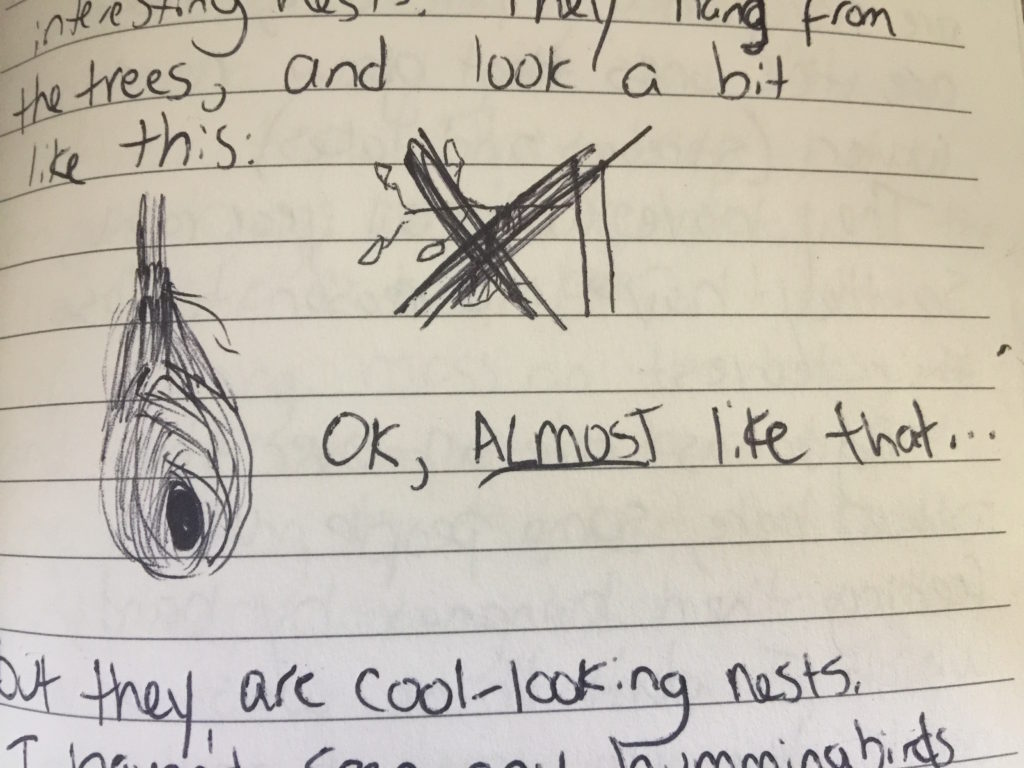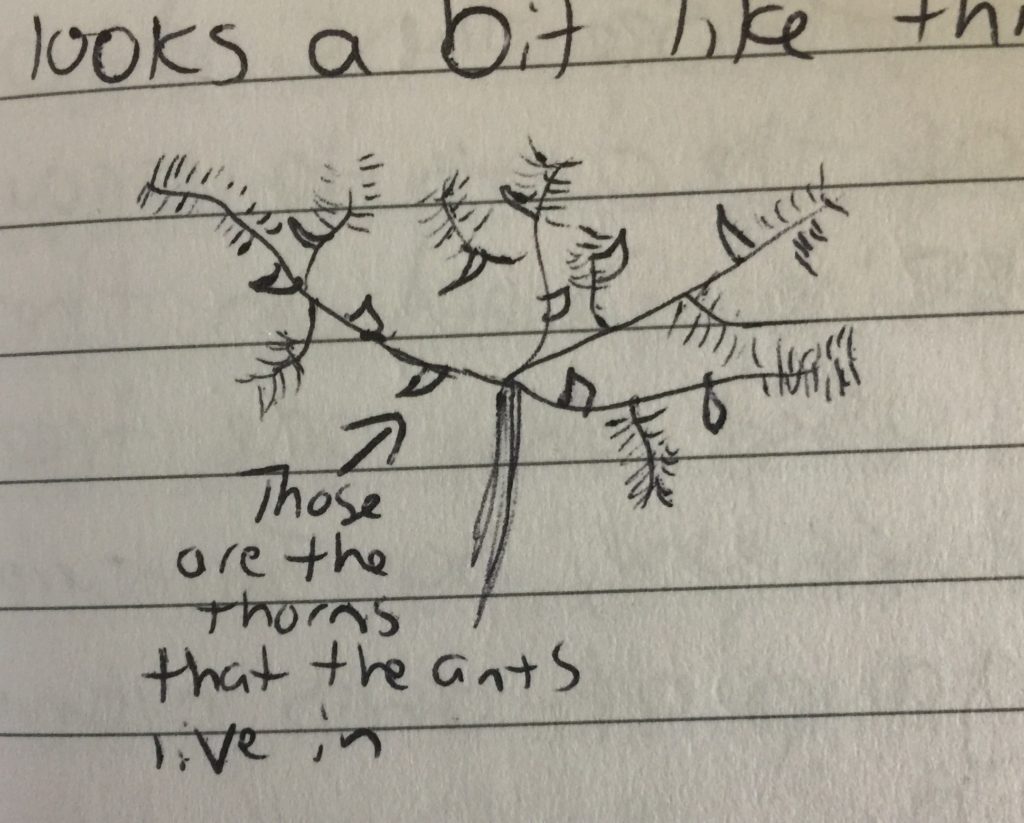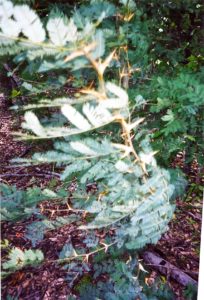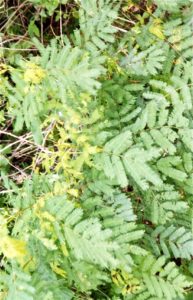It took me a while to get to publishing part II of my Costa Rica trip – it’s funny how life happens and so much time goes by before you realize it. But for everyone who has been waiting so patiently, here it is!
If you haven’t read part I, click here!
5/31
Today we had a “break” day. We spent it at the beautiful Tabacon Spa Lodge in La Fortuna.
Before reaching the lodge, we stopped for lunch next to a lake. It provided us with a gorgeous view of an absolutely breathtaking volcano. I am sorry to say that I didn’t get a picture of the volcano because my camera was MIA at the time, but no worries, I found it now!
Check out the beautiful river we saw near the lodge:
When we first checked into the lodge we immediately went to the pool, which we were pleasantly surprised to see had a swim up bar. (Note from the present – I knew I remembered visiting somewhere with a swim up bar but couldn’t remember where it was! It wasn’t until I re-read my Costa Rica journey that I realized. Shame, I was hoping it was in Florida so I could go back!) We hung out there for an hour or so and then we went over to the hot water springs, which are naturally heated from the lava (or I suppose when lava is still underground it’s called magma?). Those springs were fantastic; I had never been to a hot springs before and honestly had no idea that they could be THAT hot! We stayed there until they made us leave because it started storming with lightning and thunder.
The view outside my window at the lodge is beautiful – the same volcano that we saw earlier can be seen in the distance. It’s smoking and rumbling right now, and tonight after dark we’ll be able to see it glowing red because it is spewing lava – it’s just too bright outside to see it now. All you can see in the daytime is the smoke trailing down the mountain.
This volcano is known as Volcano Arenal. It has frequent (non life-threatening) eruptions; it’s a very active volcano.
I’m now in the patio attached to my room and I’m just sitting here by myself… watching the rain, listening to the thunder, and watching the volcano erupt. At the moment it’s hard to tell if the noises I hear are coming from the volcano or the thunder.
Side note – the volcano just did a huge boom, WOW!
Everyone is begging the professor to let us stay here a couple of days more instead of going to Pale Verde, our next rain forest (or actually dry tropical forest) site. I know that this place is nice, and it’s cool to have a little break from roughing it in Costa Rica, but I would definitely rather go see the forest. You can go to a spa with friends a lot easier than you can go to a dry tropical forest and learn about it first hand! I will admit though that I am a little worried about the scorpions that are supposed to be all over the place in Pale Verde.
6/1
Before I talk about today, let me tell you about last night… Not only did I get to see the volcano erupting in the dark (which was well worth the wait), I also got to go to a Spanish club with a few of the others. It was really fun! We went in and immediately heard a Spanish band playing. There were three guys up on a stage with their instruments who were dancing synchronized, Spanish style dancing, with plenty of singing and clapping. All I can think to explain is that it was like the Spanish Backstreet Boys! All the people on the dance floor were dancing in the Spanish style, which intimidated us at first, but we got used to it – and we ended up dancing throughout the night.
It was really fun, even though I’m sure they could tell I was American by my (terrible) dancing. When we got back to our rooms from the club, a few of the guys and a few of the girls and I chilled on the patio and watched some more of the eruptions before going to bed. It was a good night.
THEN we get to Pale Verde. Oh. My. God.
First of all, let me warn you that I’m not in all that great of a mood to begin with because I haven’t had much sleep.
We get there and the place is swarming, literally SWARMING with insects. In 15 minutes, I got about 13 bug bites. This was when the strong bug block went on full strength, and yet still they harassed us. I also got bit by an ant, which REALLY hurt. I may have whined about it more than I normally would have because of my crankiness, but it HURT!
Here we are hiking through the buggy dry forest:
More bug bites and harassment by bugs happened throughout the day. We saw monkeys and cool birds, but I was so distracted with slapping myself to get rid of the mosquitoes that I didn’t pay much attention. I felt bad because Prof L kept trying to teach but we were not paying as much attention as we did in La Selva. Hopefully after we’ve all had a bit of sleep we’ll be better able to ignore the annoying insects.
One positive thing about the bugginess – because Pale Verde has so many mosquitoes, it also has a TON of dragonflies. The dragonflies are zipping around everywhere, hanging around the people because the people attract the mosquitoes which dragonflies love to eat. I became very fond of dragonflies on this trip.
We did see some cool things. For example, I never would have thought you’d see cacti in a rain forest:
Pale Verde is scary in more ways than just the little bugs. It also has scorpions crawling up through shower drains (yes, we saw it) and it’s a place where killer bees are known to exist (one boy years ago was killed by them). So let it be known that as of now I’m not very happy and I can’t wait to leave. I really hope this all won’t seem as bad tomorrow because I do want to learn about the tropical dry forest.
I do have to admit there were some very pretty parts in Pale Verde, even if I was too miserable to pay attention besides snapping photos every so often. This swampy area is so colorful!
And the mountains in the background were beautiful.
Today was also the day we presented our personal experiments from La Selva in class. A few of the things that were tested and reported on during class –
- leaf litter amounts on the floor
- kinds of sugars ants are attracted to
- leaf cutters being placed in different colonies
- pheromone trail moving (mine!)
- water PH levels
- DEET sprays on ant trails
OK, I have to sleep now, more will definitely happen tomorrow.
6/2
Today was another buggy day.
We woke up very early, crawled out of our bug nets, had breakfast and went on a nature hike in the Pale Verde forest. It was very cool, but also very hot. These woods are quite different from the ones in La Selva. The trees don’t grow to be nearly as tall, and the leaves are much smaller. In La Selva, if you cut down a tree you wouldn’t be able to count the trees age by it’s rings because it doesn’t have them. It is a constant growing season there. In contrast – Pale Verde has a 4-6 month dry season, so the trees do have rings. An interesting fact – some people can estimate a trees age in tropical rain forests by the size of the woody vines growing on them.
Pale Verde is also much more rocky than La Selva. The rocks are mainly limestone, which provides many of the minerals that are necessary for the trees to grow. There are many more bugs in Pale Verde (SO MANY MORE), which I don’t quite understand because La Selva is so much wetter. Don’t bugs normally dig moisture? Pale Verde is also larger than La Selva, and is part of a national park.
It seems to also be uncomfortably hotter here in Pale Verde. Where is this “dry heat is better than wet heat” coming from?!
There are a bigger variety of birds here in Pale Verde that I did not see in La Selva, I saw a turquoise browed motmot, which is a stunningly beautiful bird. I also saw a couple of scarlet macaws, very beautiful birds that are hunted for sale in pet stores. I saw a ferruginous pygmy owl, a few great kiskadees, and a few orioles, who have very interesting nests. They hang from the trees and look a bit like this (I drew a picture)
We also saw egrets, woodstorks, a few northern jacana, and a black bellied whistling duck. I haven’t seen any hummingbirds here, but in La Selva they were all over the place.
The trees in Pale Verde that grow near the streams and lakes are evergreen trees – they have water all year round so they have no reason to lose their leaves in the dry season.
There are iguanas everywhere here! Some people were feeding them bananas by hand, which I didn’t think was a very good idea because I’ve always heard that you should never feed wild animals. It only causes them to no longer fear humans, which can lead to all kinds of trouble.
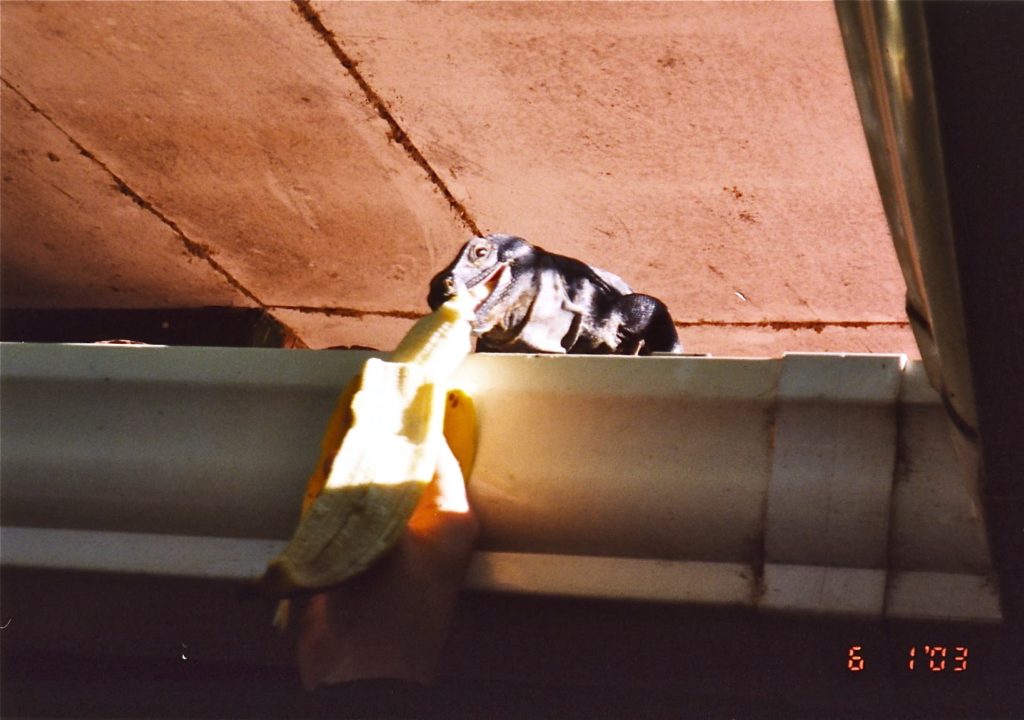
On our long hike today we climbed up to a really high scenic outlook rock which was appropriately named “La Roca”; we sat and relaxed there for a while, enjoying the surrounding view. Unfortunately, it was at this point that I started not feeling terrific, so I wasn’t able to enjoy it as much as I should have. I was so hot, and I was feeling light-headed – and being that high up is definitely not a good place to feel light-headed! So I sat down and put my head in my hands for a while until it passed. I didn’t really want to tell anyone because I would have felt bad if I made everyone come down because I wasn’t feeling good. Eventually I think Prof. L realized that something was wrong and he took me down. I guess it could have been dehydration or heat exhaustion or a mixture of the two, I don’t know. I just went home and took a nap, and woke up with a splitting headache, but I took a Tylenol and felt a lot better when it kicked in.
I was kind of upset that I missed the next hike because of that nap though. Everyone got to see a rattler and a bunch of other birds, and they all seemed really happy with that hike. I hate that I missed it because that chance will never come again. Oh well, I’ll have to make up for it on the rest of the trip, although the other two sites we visit are not going to be as intense as the first two.
After I felt better, I went out to do my ant experiment for my report which would be due a few weeks after we returned to the states.
The acacia tree is full of vicious little ants called “pseudomyrmex” who will fight furiously for the survival of their tree. They keep it clean of all bugs and predators who mean harm to the tree (any leaf eaters), and also keep it clean of moss. They attempt to keep it free of nesting birds but the birds usually ignore them and keep coming back so eventually the ants leave them alone. The ants live in thorns on the plant. It looks a bit like this:
The pseudomyrmex ants are constantly patrolling the acacia trees, but if you don’t see them at any time, all you generally have to do is shake a branch on the tree, which will cause a swarm of ants to come out. Because this relationship has evolved over many years, the tree now depends on the ants to protect it. If the ants ever stopped protecting the tree, it would eventually die. Here are some slightly blurry images of the acacia:
If you are stung by one of the ants, it is quite painful and will hurt for about 10 minutes afterwards. The sting area will swell up a bit and/or become red in a slightly bigger than a quarter-sized area, but if left alone for a couple of hours it will eventually end up looking like a mosquito bite.
For my independent study report, I wanted to see the reactions of the ants to various stimuli being placed on their tree.
Here are my results:
First, I shook a branch to see if the ants were active in that particular tree. They came out very quickly, ready to attack. I put a leaf on one of the spikes that the ants live in, but the ants didn’t really pay attention to the leaf. A few of them investigated, but that was the extent of it.
Next, I found another acacia tree that was near the one I used for my experiment. It was at most 2 feet away from it. I attempted to get an ant to come on a stick so I could transfer it from one tree to another, but the ants just ignored the stick. So I got a pair of tweezers and a small plastic box, and began to catch ants by pulling off a few leaves with the tweezers that had an ant on it, and dropped it into the box before the ant could bite me (of course I got bit a few times anyway). I then transferred that ant to my main acacia tree. Surprisingly enough, the ants didn’t bother the new ant. They ignored him completely, though the new ant seemed to be very upset about being on a new tree.
Here are more results when I tried to take ants from further away trees (boy I wish my ant catcher didn’t break).
- 2 feet – no reaction
- 15-20 feet – again, nothing
- 30-40 feet – the ants definitely didn’t like this guy. They attacked him, and I eventually lost sight of him.
- 50-60 feet – I expected the ants to attack this one too, since he was from even further away, but they ignored it. I haven’t the foggiest idea why that was. My scientific instinct told me to try once again, so I went and found a tree that was…
- 100 feet away – I grabbed an ant (actually I got two this time) and when I put them on the tree, they were both attacked.
Next I decided to try something else. I found a dead dragonfly on the ground (I wouldn’t hurt a live dragonfly because they make me happy by eating those vile mosquitoes) and I tried putting it on the tree. It was windy so it fell off a few times, but I got it wedged in eventually. The wind made it move around fairly realistically, and the ants attacked that dragonfly so quickly it was unbelievable. They completely swarmed that dead dragonfly. Unfortunately, after this, I could no longer perform any more experiments because the wind was getting too strong and it definitely seemed like it was going to rain, but I think I have enough data for my paper!
I pissed off a lot of ants today, that’s for sure. Hopefully they don’t come back for revenge some day (Note from the present – how’s THAT for forshadowing? I’ve had numerous problems with ants since then, the most notable being the “ghost ant” which is common in Florida. I like to think they are the ghost ancestors of these Costa Rican ants that I sent to their death).
We are leaving Pale Verde forever tomorrow, so I must get some sleep and pray that no mosquitoes or other insects get into my netting (I had to tape up a bunch of holes in it already. I’m not sure exactly what possessed me to bring tape on this trip, but I sure am glad that I did!
Oh, and before I sign off there is one more thing that I forgot to mention that was interesting about today. Damon ate a live beetle. A big juicy one with a crispy crunchy shell… ugh. It was so disgusting! I think he got the idea because H was talking about how while he was in the woods he ate a couple of termites (his reasoning being that if he was ever lost in the woods, he would have to eat something for protein and he wanted to know what to expect). So Damon picks up a beetle that is crawling along the table and holds it by it’s legs while it wiggles around like mad and asks how much we would pay for him to bite it’s head off.
After a bidding war the money amount gets up to 10,000 colones (about 25 American dollars).
When the money was on the table, Damon put the beetle on his spoon, said “this is for your birthday, H”, and put the entire thing in his mouth, chewed, and swallowed.
It was absolutely disgusting! I really didn’t think he would do it, but he did. It’s so funny how these boys constantly compete… H ate termites, so Damon had to eat a beetle.
Tomorrow we are off to Monte Verde for our cloud forest adventure; more writing will come then! P.S., I had two cockroaches in my insect net when I got to my bed, which really annoyed me. Cockroaches are so dirty, they are the last thing I want crawling in my bed.

